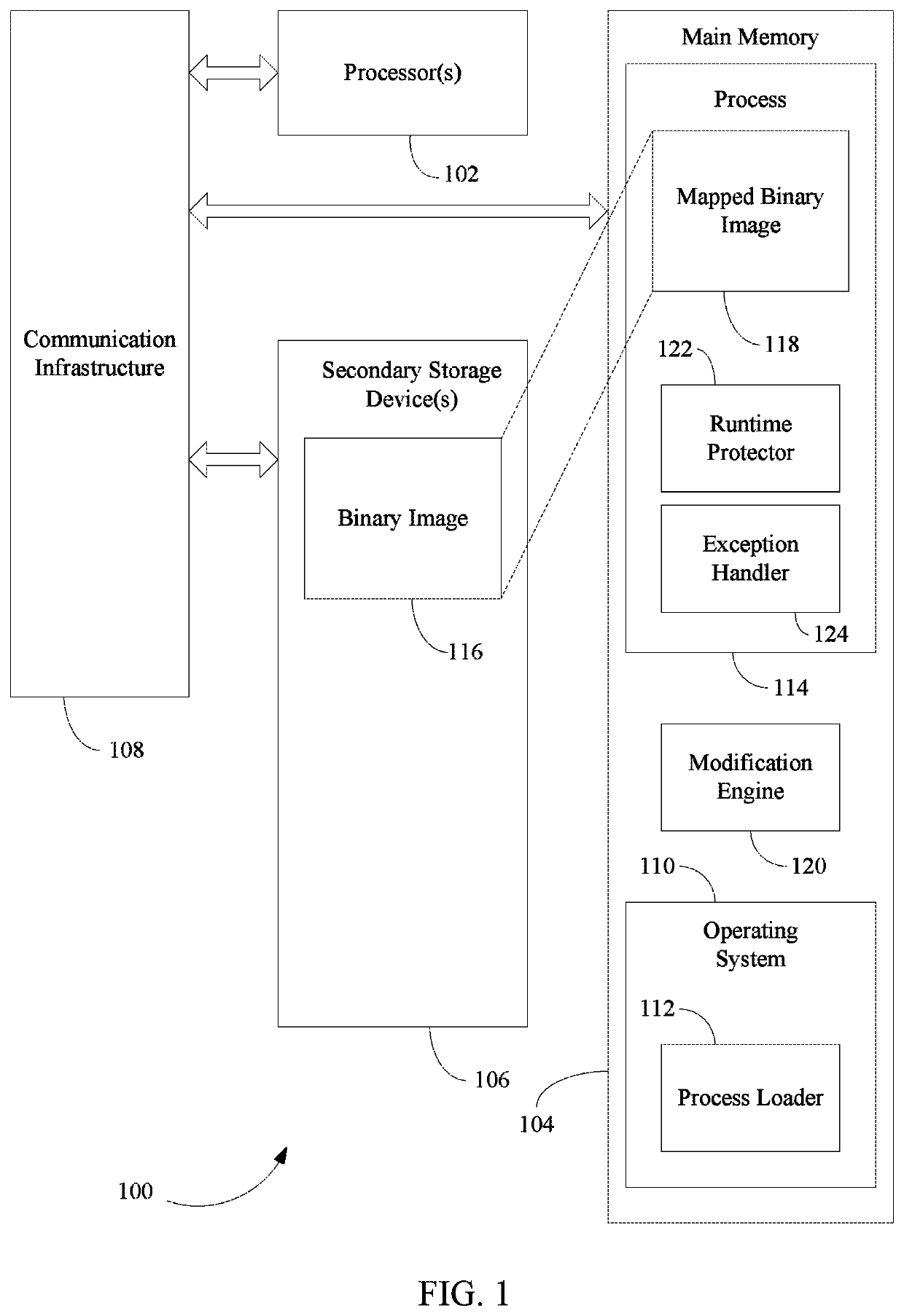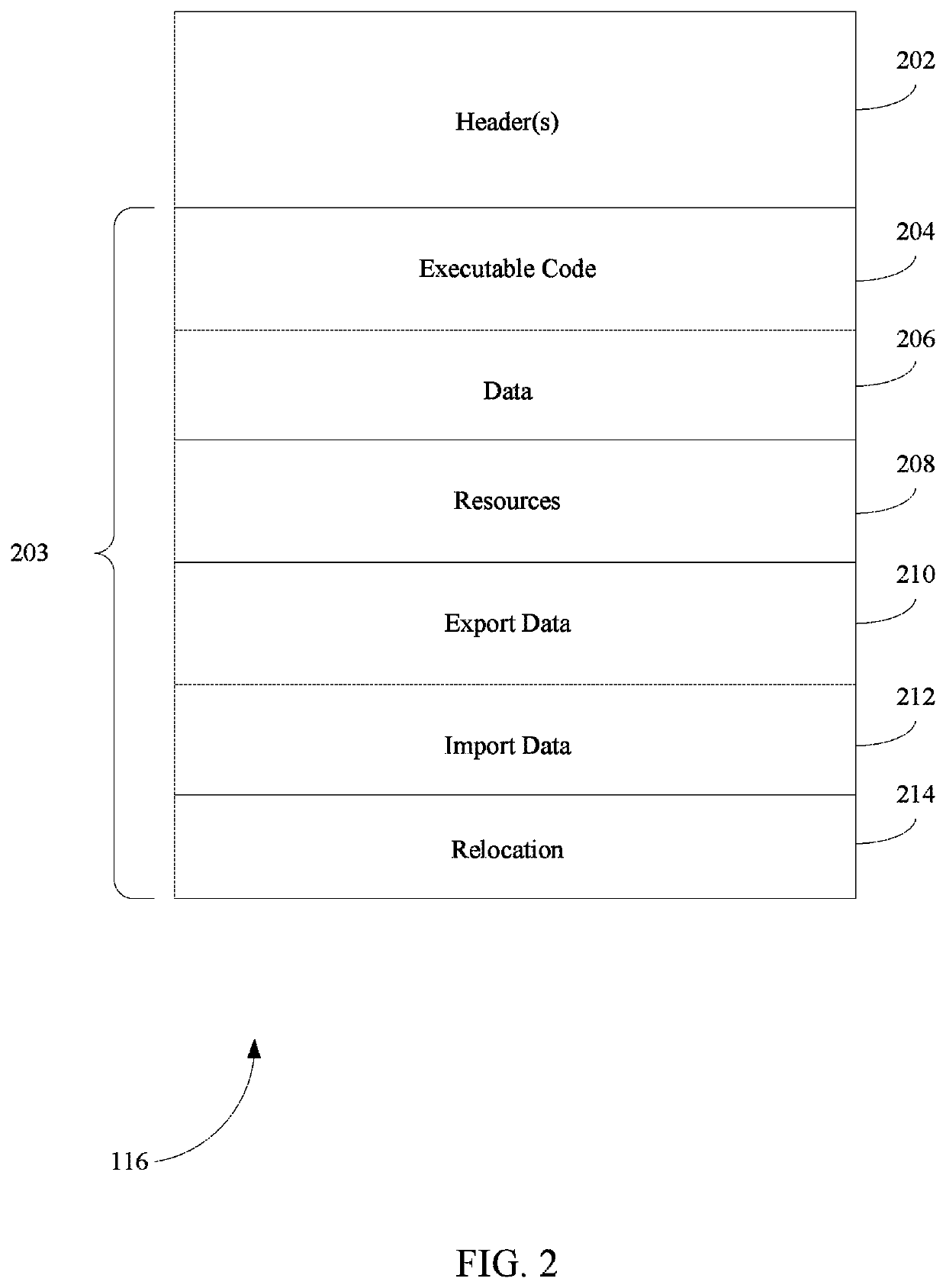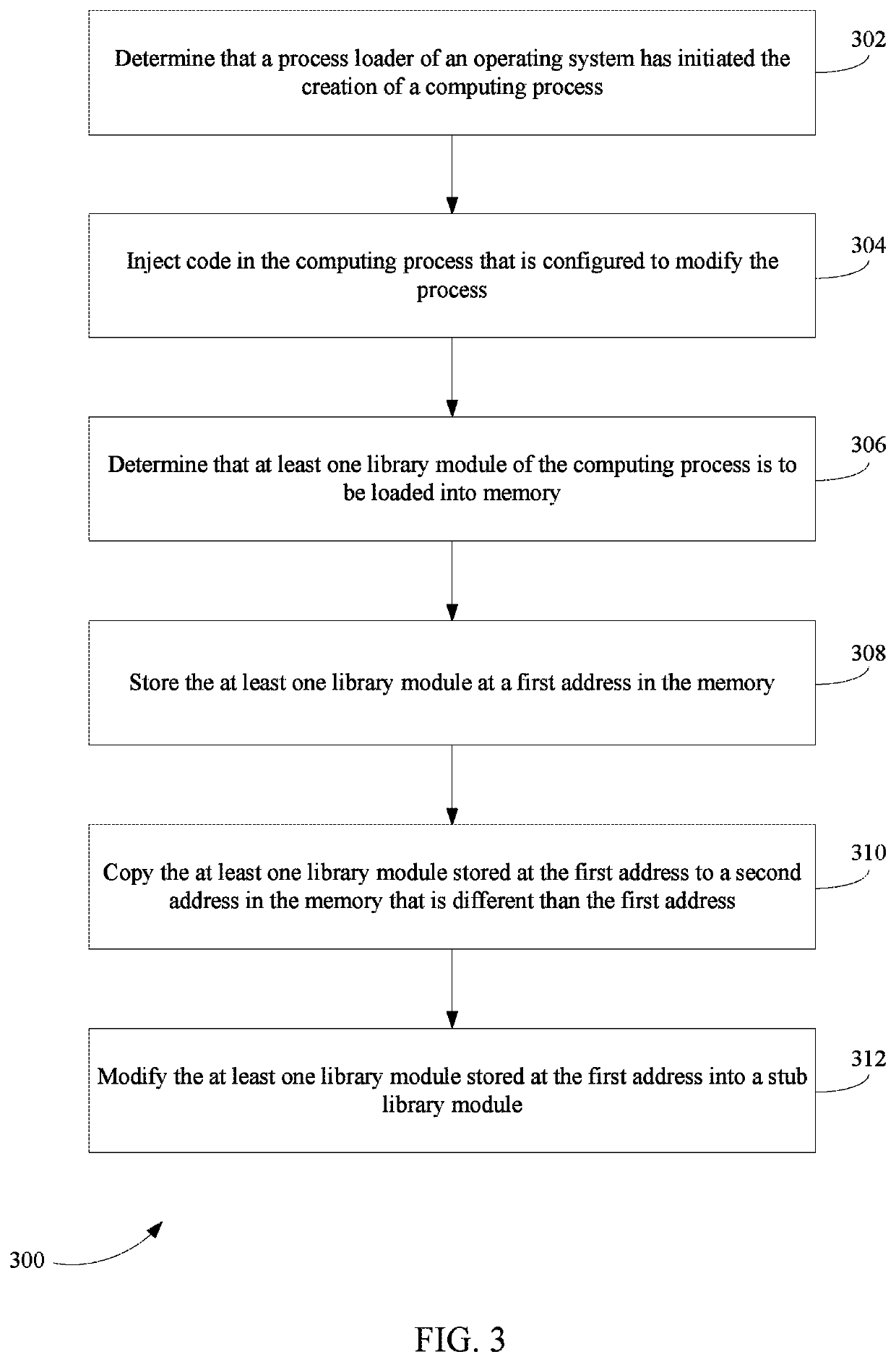Malicious code protection for computer systems based on process modification
a technology of malicious code and computer system, applied in the field of malicious code protection for computer system based on, can solve the problems of no visible signature of malicious file, difficult to define strict rules that lead to the identification of malicious behavior, and inability to detect malicious files
- Summary
- Abstract
- Description
- Claims
- Application Information
AI Technical Summary
Benefits of technology
Problems solved by technology
Method used
Image
Examples
example embodiments
II. Example Embodiments
[0026]Malicious code (e.g., malware) including injected shellcode, relies on some basic assumptions regarding the runtime context of the target in order to initialize itself and to execute its payload properly. In general, shellcode injected into a running process has to perform some initial steps before it can proceed. It should do at least part of the initiation steps that the system's default loader would normally do when creating a running process from an executable file (e.g., a binary image). In particular, it is crucial for the injected code to obtain the addresses of certain shared libraries (e.g., dynamic-link libraries (DLLs)) as they are mapped into the address space of the running process, and to further obtain the addresses of the procedures (or functions) that it intends to use. In the case where the vulnerability resides inside a shared library, the injected code only needs to find the specific functionality within that library and does not need...
PUM
 Login to View More
Login to View More Abstract
Description
Claims
Application Information
 Login to View More
Login to View More - R&D
- Intellectual Property
- Life Sciences
- Materials
- Tech Scout
- Unparalleled Data Quality
- Higher Quality Content
- 60% Fewer Hallucinations
Browse by: Latest US Patents, China's latest patents, Technical Efficacy Thesaurus, Application Domain, Technology Topic, Popular Technical Reports.
© 2025 PatSnap. All rights reserved.Legal|Privacy policy|Modern Slavery Act Transparency Statement|Sitemap|About US| Contact US: help@patsnap.com



